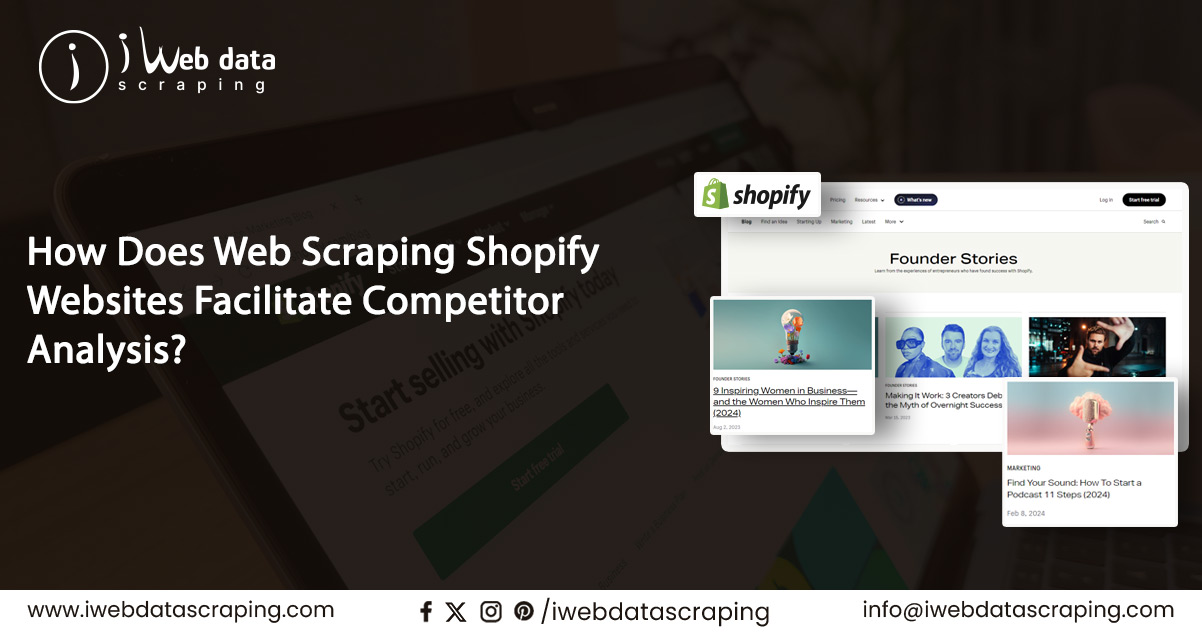
E-commerce data scraping revolutionizes how businesses extract insights from online platforms, offering unparalleled access to valuable information for strategic decision-making. Automated web scraping Shopify Websites Facilitate Competitor Analysis and help businesses collect and analyze vast amounts of data from e-commerce websites swiftly and efficiently. This data encompasses product details, pricing information, customer reviews, and competitor strategies. E-commerce data scraping enables businesses to understand market trends, consumer preferences, and competitive landscapes, empowering them to make informed decisions to optimize pricing strategies, product offerings, and marketing campaigns. Additionally, websites like Shopify data scraping empower businesses by providing access to valuable information. Facilitates real-time monitoring of market changes, allowing businesses to adapt swiftly to evolving trends and stay ahead of the competition. With its ability to extract actionable insights from the wealth of online data, e-commerce data scraping services emerge as an indispensable tool for businesses seeking to thrive in the dynamic landscape of online retail.
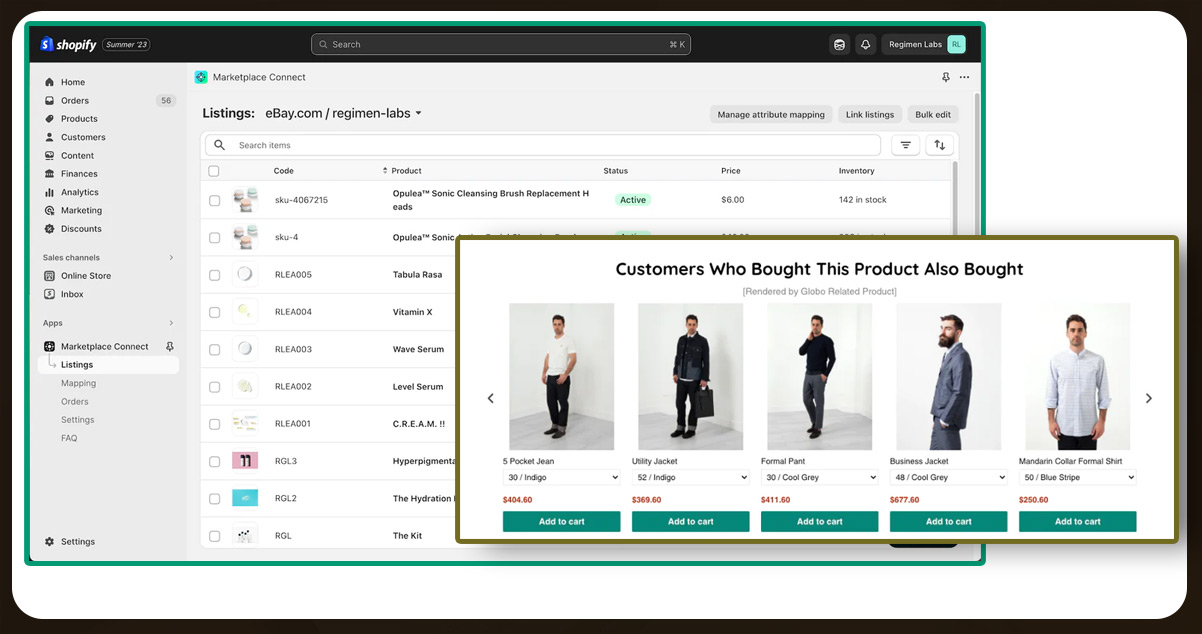
Shopify websites are potent platforms for e-commerce businesses to showcase and sell their products online. Businesses can use Shopify data scraping techniques to extract valuable insights from these websites, including product details, pricing variations, and competitor strategies. This data enables businesses to optimize pricing strategies, tailor product offerings, and enhance marketing campaigns for improved competitiveness. By scraping Shopify product data, businesses gain access to information that drives informed decision-making and fuels growth in the dynamic e-commerce landscape.
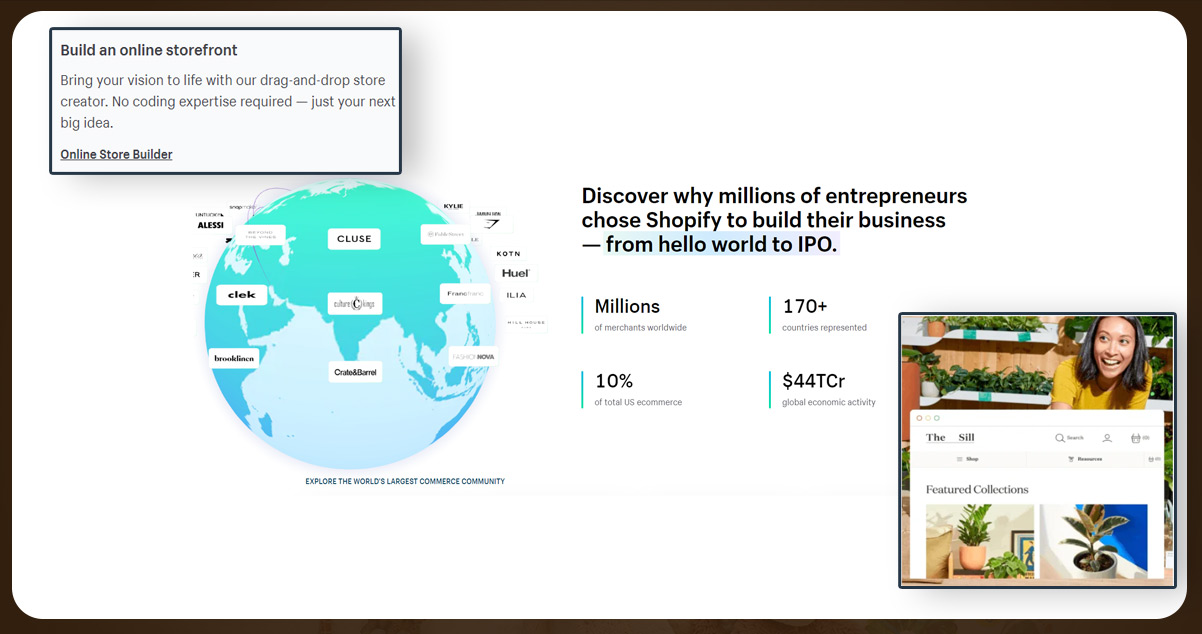
Titles
Brand/manufacturer
Part number (if available)
Manufacturer No. (if available)
Short and long Descriptions (where applicable)
Specs/dimensions (where applicable)
Features (if applicable)
Product weights
Product category mapping (example: Home / Detectors / Smoke Detectors / Simplex 4098-9714)
Data sheet links (URL)
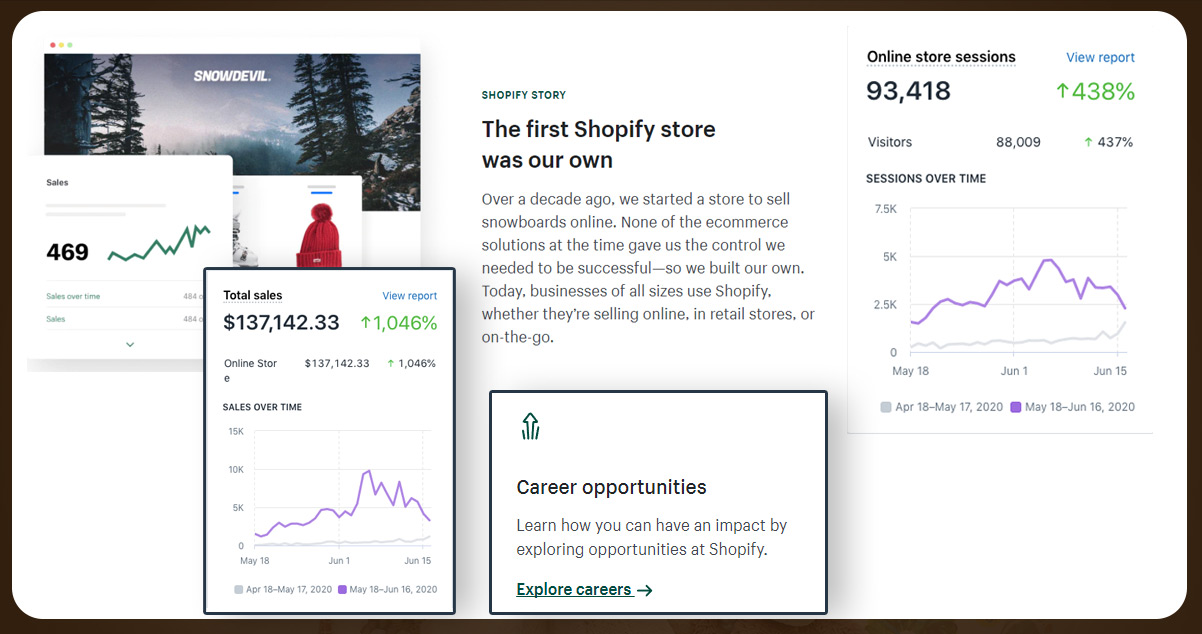
In the realm of e-commerce, thorough market analysis is paramount. Shopify data scraping offers businesses a detailed understanding of market dynamics, aiding strategic decision-making. Listed below are some of the significant benefits:
Comprehensive Market Analysis: Scrape Shopify data to provide businesses with a comprehensive market landscape view. By extracting data from Shopify websites, businesses gain insights into various aspects of market dynamics, including consumer behavior, preferences, and emerging trends. This detailed market analysis enables businesses to make informed decisions about product offerings, marketing strategies, and overall business direction.
Competitive Intelligence: Data scraping from the Shopify platform provides businesses valuable competitive intelligence. By monitoring competitors' pricing strategies, product assortments, and promotional activities, businesses can stay ahead of the competition. Understanding competitor actions allows businesses to adjust their strategies, whether pricing adjustments, product differentiation, or targeted marketing campaigns.
Pricing Strategy Optimization: Access to pricing data using Shopify scraper empowers businesses to optimize their pricing strategies. By analyzing pricing trends, competitor prices, and consumer response, businesses can determine the most effective pricing strategy to maximize profitability while remaining competitive.
Product Insights: Shopify data scraping enables businesses to gather detailed insights into products listed on Shopify websites. It includes product descriptions, specifications, customer reviews, and sales data. Such insights aid businesses in product research, development, and assortment planning, ensuring alignment with consumer preferences and market demands.
Trend Spotting: Through e-commerce data scraper, businesses can identify emerging trends and popular products within their industry. By analyzing patterns in product sales, search queries, and customer behavior, businesses can capitalize on market opportunities and adjust their product offerings or marketing strategies to stay ahead of evolving consumer preferences.
Inventory Management: It facilitates effective inventory management. By monitoring inventory levels, tracking product availability, and forecasting demand based on historical sales data, businesses can optimize inventory levels, reduce stockouts, and minimize carrying costs.
Marketing Optimization: It gives businesses valuable insights to optimize their marketing efforts. By analyzing customer engagement metrics, sales performance, and campaign effectiveness, businesses can refine their marketing strategies, target the right audience segments, and allocate resources more efficiently to drive better results and ROI.
Strategic Decision-Making: Ultimately, it empowers businesses to make strategic decisions backed by data-driven insights. Whether adjusting pricing strategies, expanding product offerings, or refining marketing tactics, businesses can leverage data scraped from Shopify websites to drive growth, improve competitiveness, and achieve long-term success in the e-commerce landscape.
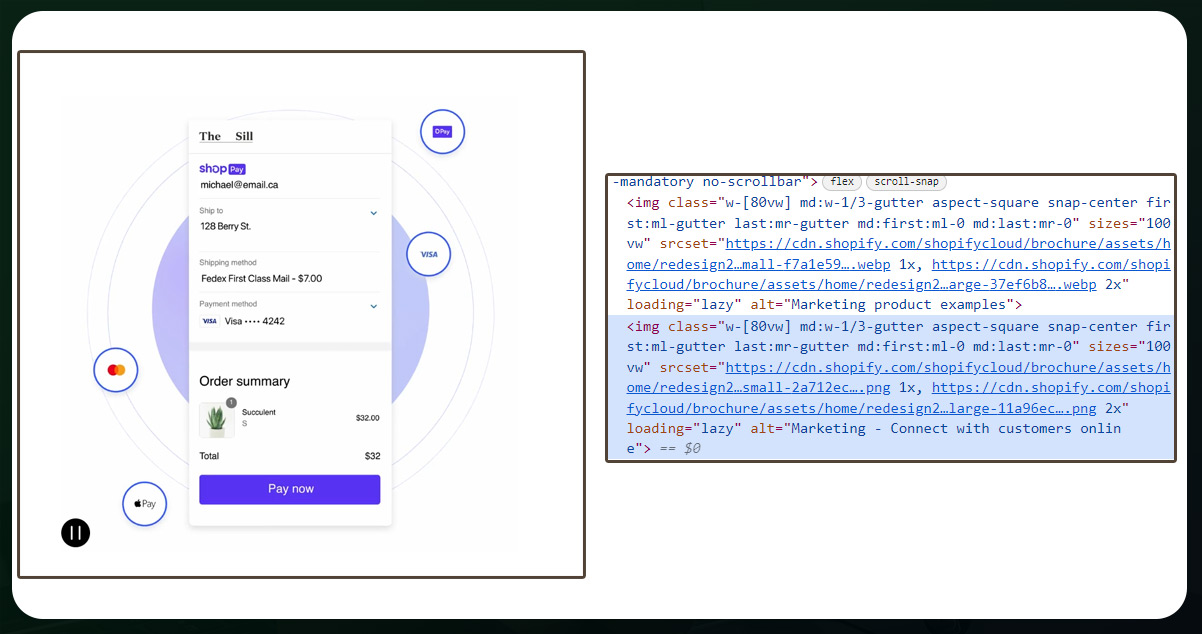
The tools and techniques include web scraping, API integration, browser extensions, custom scripts, proxy services, and specialized software.
Web Scraping Tools: Utilize web scraping tools like BeautifulSoup, Scrapy, or Selenium to extract data from Shopify websites efficiently and accurately.
API Integration: Leverage Shopify's API (Application Programming Interface) to access structured data directly from the platform, ensuring reliable and real-time data retrieval.
Browser Extensions: Install browser extensions such as Data Miner or Web Scraper to facilitate data scraping directly from the web browser interface, simplifying the extraction process.
Custom Scripts: Develop custom scripts using programming languages like Python, JavaScript, or Ruby to tailor data scraping processes according to specific requirements and preferences.
Proxy Services: Employ proxy services to mask IP addresses and avoid detection while scraping data from Shopify websites, ensuring uninterrupted and anonymous data extraction.
Data Scraping Services: Consider utilizing professional data scraping services or software solutions specifically for scraping e-commerce websites like Shopify, offering customizable features and support for complex tasks.
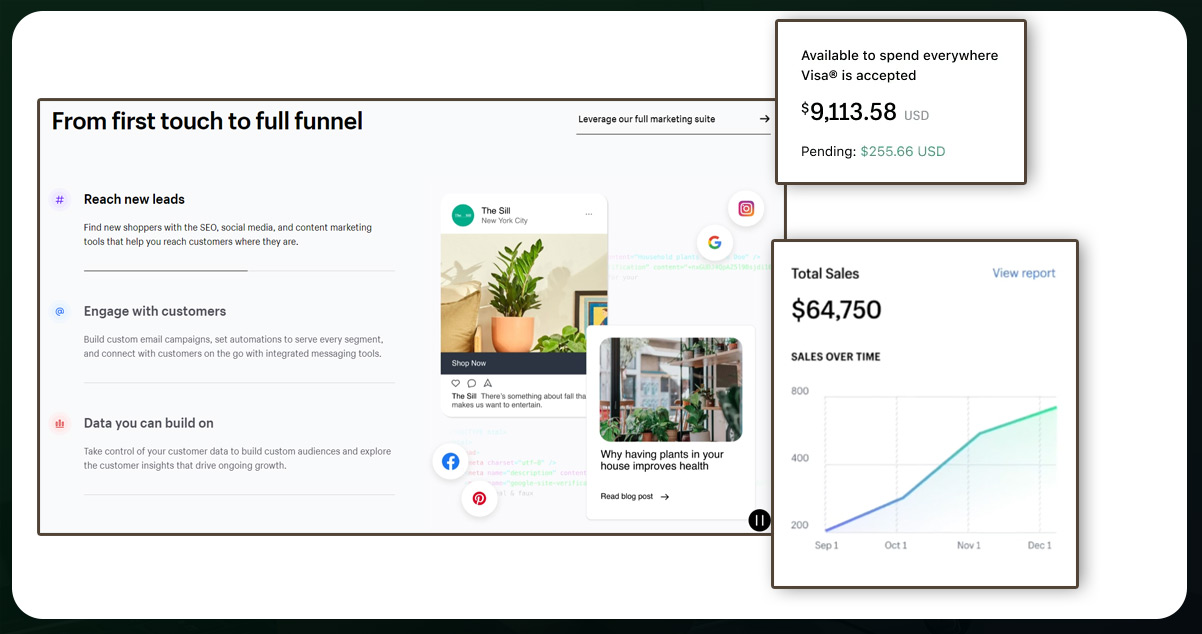
In the realm of Shopify data scraping, a systematic approach is crucial. It involves identifying target data, selecting appropriate methods, setting up scraping environments, and understanding Shopify's structure. To perform Shopify data scraping and collect the data in CSV format, follow these step-by-step instructions:
Identify Target Data: Determine the specific information you want to scrape from Shopify websites, such as product details, pricing, reviews, or inventory levels.
Choose a Scraping Tool: Select a suitable scraping tool for your needs. Popular options include BeautifulSoup, Scrapy, or Selenium for web scraping or utilizing Shopify's API for structured data extraction.
Set Up Environment: Install the chosen scraping tool and any necessary dependencies. If using Python-based tools like BeautifulSoup or Scrapy, ensure you have Python installed on your system.
Scrape Data: Write code or scripts to scrape the desired data from Shopify websites. Utilize the scraping tool's functionalities to navigate the website, extract relevant information, and store it in memory.
Format Data for CSV: Organize the scraped data into a structured format suitable for CSV conversion. Ensure each data point has its column and rows represent individual records.
Write to CSV File: Use Python's built-in CSV library or pandas to write the formatted data to a CSV file. Specify the file path and name for the CSV output.
Handle Pagination: If scraping multiple data pages, implement pagination handling to ensure all relevant data is available. Adjust scraping logic to navigate through multiple pages and aggregate the results.
Handle Errors and Exceptions: Implement error handling mechanisms to address issues encountered during the scraping process, such as network errors or data inconsistencies.
Test and Validate: Test the scraping script thoroughly to ensure it captures all desired data accurately. Validate the CSV output to confirm that it contains the expected information in the correct format.
Execute and Monitor: Execute the scraping script to collect data from Shopify websites. Monitor the scraping process to ensure it runs smoothly and captures all necessary data without interruptions.
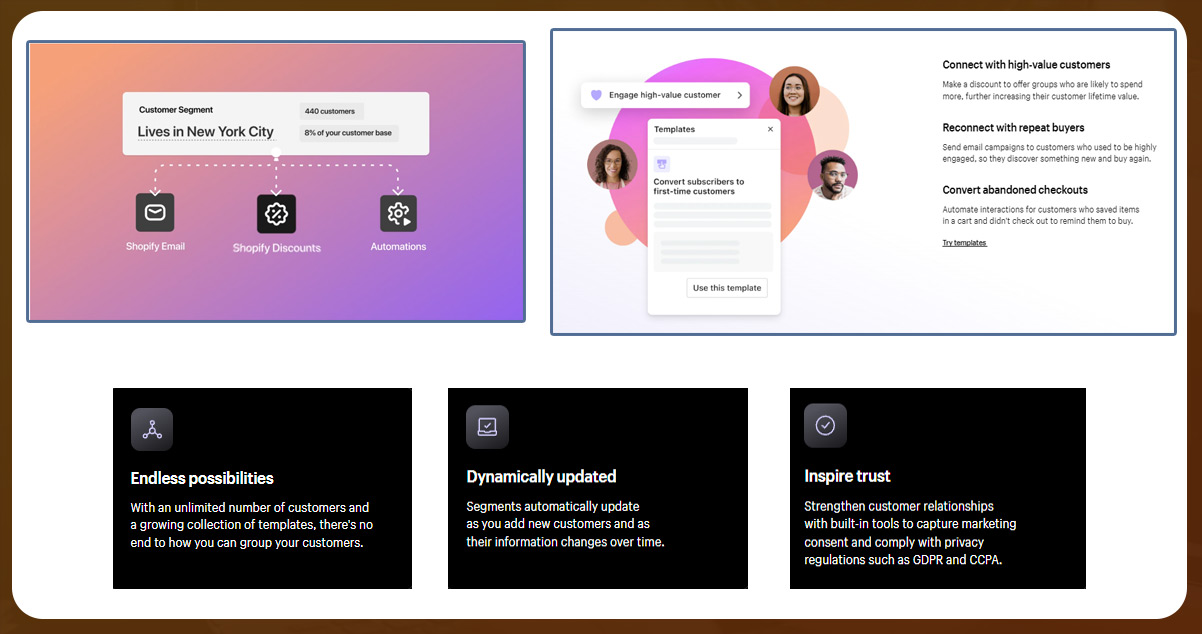
Shopify data scraping offers a myriad of practical applications across various aspects of e-commerce operations:
1. It aids in market analysis by extracting data on product trends, pricing strategies, and customer preferences, enabling businesses to stay abreast of market dynamics and make informed decisions.
2. Shopify data scraping facilitates competitor analysis by providing insights into competitors' product assortments, pricing strategies, and promotional activities, empowering businesses to identify gaps and opportunities in the market.
3. Data scraping enables businesses to optimize their pricing strategies by analyzing pricing trends, competitor prices, and consumer responses, thus maximizing profitability while remaining competitive.
4. Shopify data scraping supports inventory management by monitoring product availability, tracking inventory levels, and forecasting demand based on historical data, ensuring efficient inventory management and minimizing stockouts.
The practical applications of Shopify data scraping span market analysis, competitor intelligence, pricing optimization, and inventory management, enabling businesses to drive growth, enhance competitiveness, and achieve long-term success in the e-commerce landscape.
Conclusion: Shopify data scraping emerges as a powerful tool for businesses navigating the dynamic landscape of e-commerce. By extracting valuable insights from Shopify websites, businesses can gain a competitive edge through informed decision-making, strategic planning, and optimized operations. From market analysis and competitor intelligence to pricing optimization and inventory management, the applications of Shopify data scraping are diverse and impactful. By leveraging these insights effectively, businesses can drive growth, enhance competitiveness, and achieve long-term success in the ever-evolving world of online retail. Thus, Shopify data scraping is a cornerstone for businesses looking to thrive and innovate in the e-commerce ecosystem.
Please contact iWeb Data Scraping for a comprehensive range of data services! Our team will guide you on whether you need web scraping service or mobile app data scraping. Connect with us today to discuss your specific requirements for scraping retail store location data. Let us showcase how our customized data scraping solutions can deliver efficiency and reliability tailored precisely to meet your unique requirements.